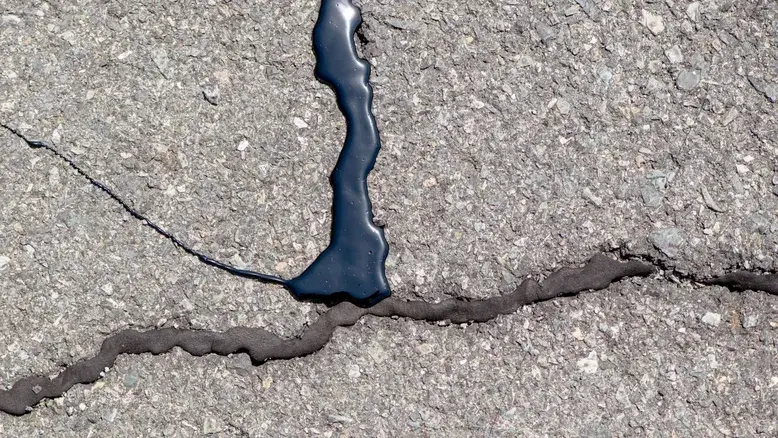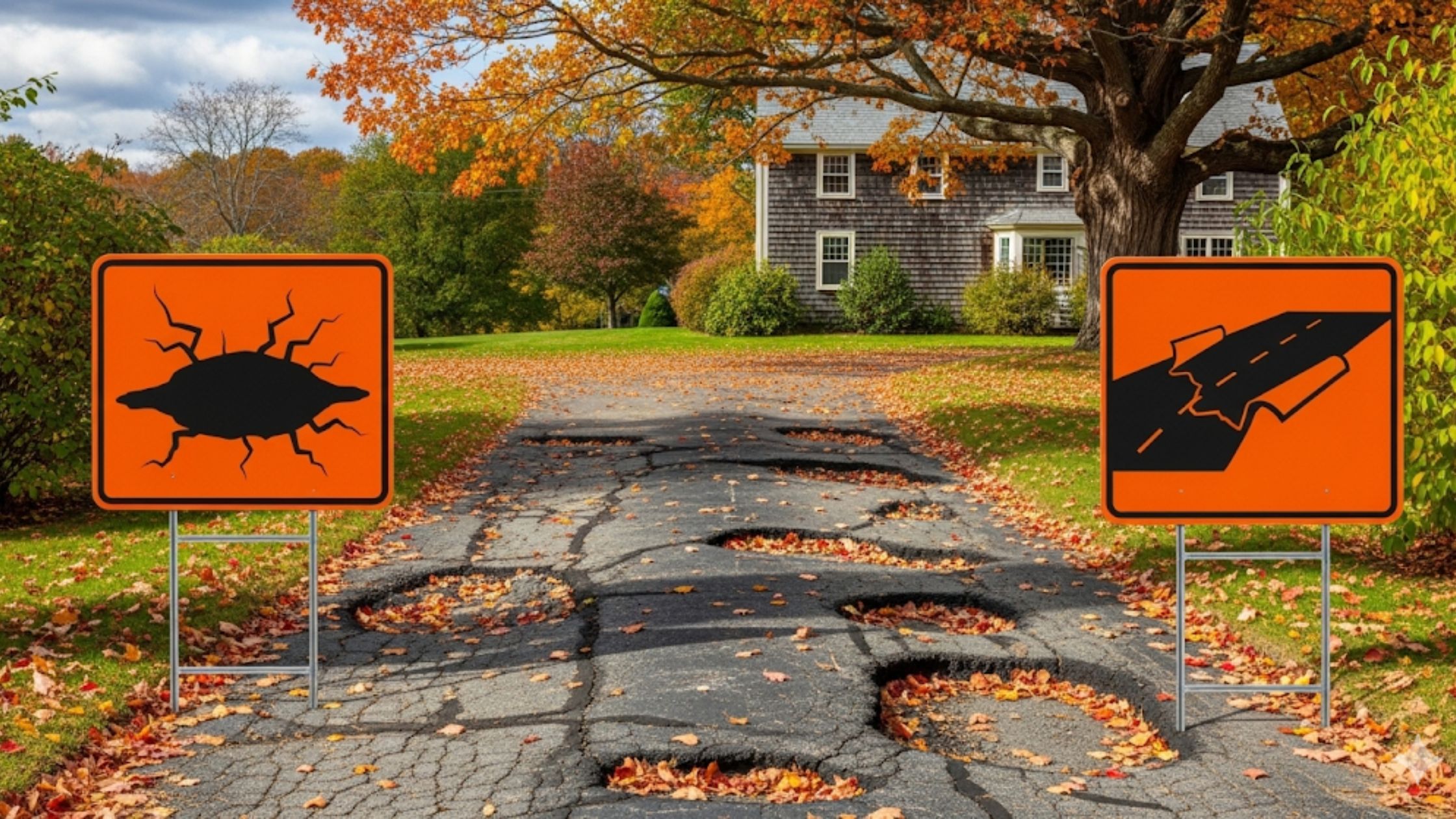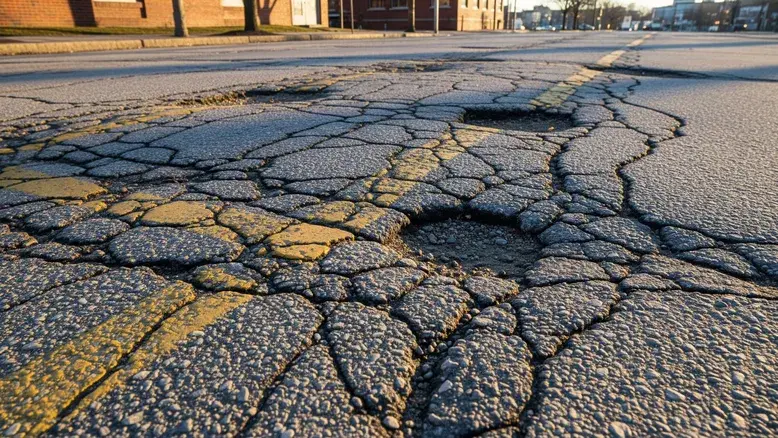Asphalt pavements in Massachusetts endure harsh freeze-thaw cycles, heavy traffic loads, and moisture intrusion. Without timely maintenance, small fissures evolve into extensive damage, leading to expensive full-depth repairs. Crack filling is the first line of defense against water infiltration and structural deterioration, preserving pavement integrity and extending service life.
Understanding Crack Filling and Its Role in Pavement Preservation
Crack filling involves applying a specialized material into cracks in asphalt pavements to prevent water and debris from infiltrating the surface and undermining the subbase. This process seals fissures, halting moisture-related expansion and preventing pothole formation.
A proper crack-filling program protects roadways, parking lots, and driveways through seasonal expansions and contractions. By addressing non-working cracks early, property owners can avoid extensive repairs and costly resurfacing projects.
When inspected regularly, small cracks become easy to treat. Filling these cracks enhances structural stability and maintains smooth surfaces for vehicles and pedestrians, reducing liability and long-term maintenance costs.
Cracks come in various forms—linear, block, or alligator patterns—each indicating different stresses and failure modes. Proper identification ensures the correct repair method, whether sealant injection for working cracks or a flexible filler for static fractures.
Understanding Asphalt Cracks sits at the heart of preventive maintenance. Recognizing crack types and causes allows technicians to recommend targeted treatments that preserve pavement structure and appearance.
Common Causes of Asphalt Damage in Massachusetts
Asphalt deterioration begins when environmental and mechanical stresses combine. Freeze-thaw cycles cause expansion and contraction, leading to fissures that widen under traffic loads. Water infiltration further erodes the base material, causing potholes and subsidence over time.
Moisture is the leading cause of cracking in asphalt, leading to significant deterioration and pavement damage. Seasonal thawing exacerbates initial defects, allowing water to seep deeper and weaken the pavement foundation.
Heavy trucks and SUVs exert substantial pressure on pavement surfaces. Rutting and wheel-track depressions develop where asphalt lacks resilience. Overloaded surfaces crack more rapidly, especially where compaction was insufficient during installation.
UV radiation accelerates asphalt oxidation, making the surface brittle and susceptible to microcracking. Over time, these microcracks coalesce into larger fissures, creating pathways for water intrusion and further weakening the pavement structure.
Poor installation practices, such as inadequate compaction and improper base preparation, significantly shorten pavement lifespan. Correct thickness, drainage, and aggregate mix design are critical to resisting traffic stress and environmental cycles.
How Crack Filling Prevents Costly Asphalt Repairs
Protecting the Sub-Base from Moisture Damage
Crack filling acts as a barrier against water penetration. When water enters cracks, it undermines the base layer, leading to pothole formation and base erosion. Properly filled cracks prevent water from seeping into subgrade layers, preserving the underlying support structure.
Studies show that water infiltration is one of the most destructive forces in asphalt deterioration. When crack sealants create a flexible, waterproof membrane, the pavement’s load-bearing capacity remains intact, reducing the risk of subsidence.
By filling cracks before winter, property managers mitigate freeze-thaw damage. Flexible hot-pour sealants bond to crack walls, expanding and contracting without fracturing, thereby maintaining waterproof integrity through cold Massachusetts winters.
Extending Pavement Life and Improving Safety
Timely crack filling can extend pavement life by up to 10 years, delaying more invasive repairs like mill-and-overlay or full-depth reconstruction. This preventative approach reduces the frequency of costly rehabilitation projects.
Filled cracks also eliminate trip hazards for pedestrians and reduce vehicle wear and tear. A smooth, sealed surface minimizes liability risks and maintains a professional appearance, enhancing both safety and aesthetics.
Regular inspections combined with crack filling campaigns help identify emerging pavement distress. Early intervention keeps surfaces in service longer, preserving capital budgets and improving return on pavement investment.
Enhancing Surface Aesthetics and Property Value
A pavement free of visible cracks boosts curb appeal for commercial properties and residential driveways alike. Well-maintained surfaces project professionalism and care, which can increase property value.
Seamless crack repairs blend into the asphalt, especially when followed by a fresh sealcoat. This uniform appearance enhances branding for businesses and instills confidence in customers and visitors.
By maintaining attractive pavement, property owners avoid negative impressions that can deter tenants or clients. An investment in crack filling yields both functional and visual dividends over the pavement’s lifecycle.
Choosing the Right Crack Filling Materials and Techniques
Hot-Pour vs. Cold-Pour Sealants
Hot-pour rubberized asphalt sealants offer durable repairs, bonding strongly to crack walls and accommodating temperature fluctuations. They remain flexible under stress, making them ideal for working cracks in parking lots and driveways.
Cold-pour sealants are packaged for quick application without heating equipment. While simpler to use, they often lack the longevity and flexibility of hot-pour materials, making them suitable only for minor, non-structural cracks.
Selecting the appropriate sealant depends on crack width, traffic load, and climate conditions. For Massachusetts pavements, hot-pour products are generally preferred for their resilience to freeze-thaw and vehicular stress.
The Essential Guide to Asphalt Crack Filling in Massachusetts offers specifications on material selection, equipment requirements, and seasonal timing to optimize the performance of crack-filling applications across the state.
Importance of Proper Installation and Seasonal Considerations
Crack preparation is as important as the sealant itself. Debris, vegetation, and moisture must be removed through wire brushing, compressed air, or heat lancing. A clean, dry crack ensures maximum adhesion.
The ideal temperature for crack filling in Massachusetts ranges from 40°F to 75°F. Cold mornings and wet conditions hinder sealant curing, whereas extreme heat softens asphalt and can extend cure times unconventionally.
Seasonal scheduling—primarily spring and fall—avoids the extremes of summer and winter. During these moderate windows, sealants achieve optimal bonding and cure within recommended timeframes, ensuring lasting repairs.
Regular maintenance inspections identify new cracks before they expand. Scheduling crack filling at the first sign of distress keeps repairs small and cost-effective, thwarting the need for large-scale rehabilitation measures.
concrete crack filler service in Massachusetts is designed to address these seasonal and technical nuances, providing customized treatments that reflect local weather patterns and pavement usage.
Cost-Effective Pavement Repair Strategies for Massachusetts Property Owners
Regular Inspections and Early Intervention
A pavement management plan begins with routine visual inspections. Identifying hairline cracks within weeks of formation allows property managers to plan timely repairs, keeping costs down and preventing crack networks from spiraling out of control.
Integrating crack filling into an annual maintenance schedule allocates budget predictability. Early treatment of minor cracks costs a fraction of mid-life pavement rehabilitations like milling or overlays.
GIS-based asset management tools can map crack locations, track repair histories, and forecast future maintenance needs. Data-driven insights ensure strategic allocation of resources to maximize pavement longevity and minimize expenses.
Combining Crack Filling with Sealcoating and Line Striping
Combining crack filling with sealcoating amplifies protective benefits. A crack-filled surface, covered by a high-quality sealcoat, resists water penetration, UV damage, and oil spills for extended periods.
Line striping renewal complements crack filling by restoring pavement legibility and safety markings. Together, crack filling, sealcoating, and striping create a comprehensive pavement preservation program that extends overall service life.
Property owners achieve the most cost-effective pavement repairs through bundled services. Combining crack filling with sealcoating and striping reduces mobilization fees, equipment costs, and traffic downtime.
Conclusion
Preventive crack filling stands as a critical component of asphalt maintenance in Massachusetts. By sealing fissures early, property owners protect the sub-base, extend pavement life, enhance safety, and safeguard property value. Integrating the right materials, techniques, and seasonal scheduling ensures durable, cost-effective outcomes.
For expert guidance, professional installation, and full pavement preservation programs, trust The SealCoating Guys to deliver concrete crack filler service in Massachusetts. Our experienced technicians use advanced materials and proven methods to keep pavements resilient through New England’s toughest conditions.
Frequently Asked Questions
What is the difference between crack filling and crack sealing?
Crack filling uses flexible fillers for non-working cracks to prevent water entry, while crack sealing applies specialized sealants to working cracks, accommodating expansion and contraction.
When is the best time to perform crack filling in Massachusetts?
Spring and fall are optimal, offering moderate temperatures (40°F–75°F) for proper sealant curing and maximum adhesion.
How long does crack filler last?
High-quality hot-pour crack fillers can last 3–5 years under normal traffic and climate conditions; reapplication depends on environmental stress and pavement use.
Is crack filling a DIY project or should I hire professionals?
While small DIY repairs are possible, professional services ensure optimal material heating, crack preparation, and application consistency—key to long-lasting results.
How does crack filling save money on future asphalt repairs?
By preventing water infiltration and base layer erosion, crack filling averts potholes and structural failures, reducing the need for costly milling, overlays, or full replacements.






.webp)

.svg)



